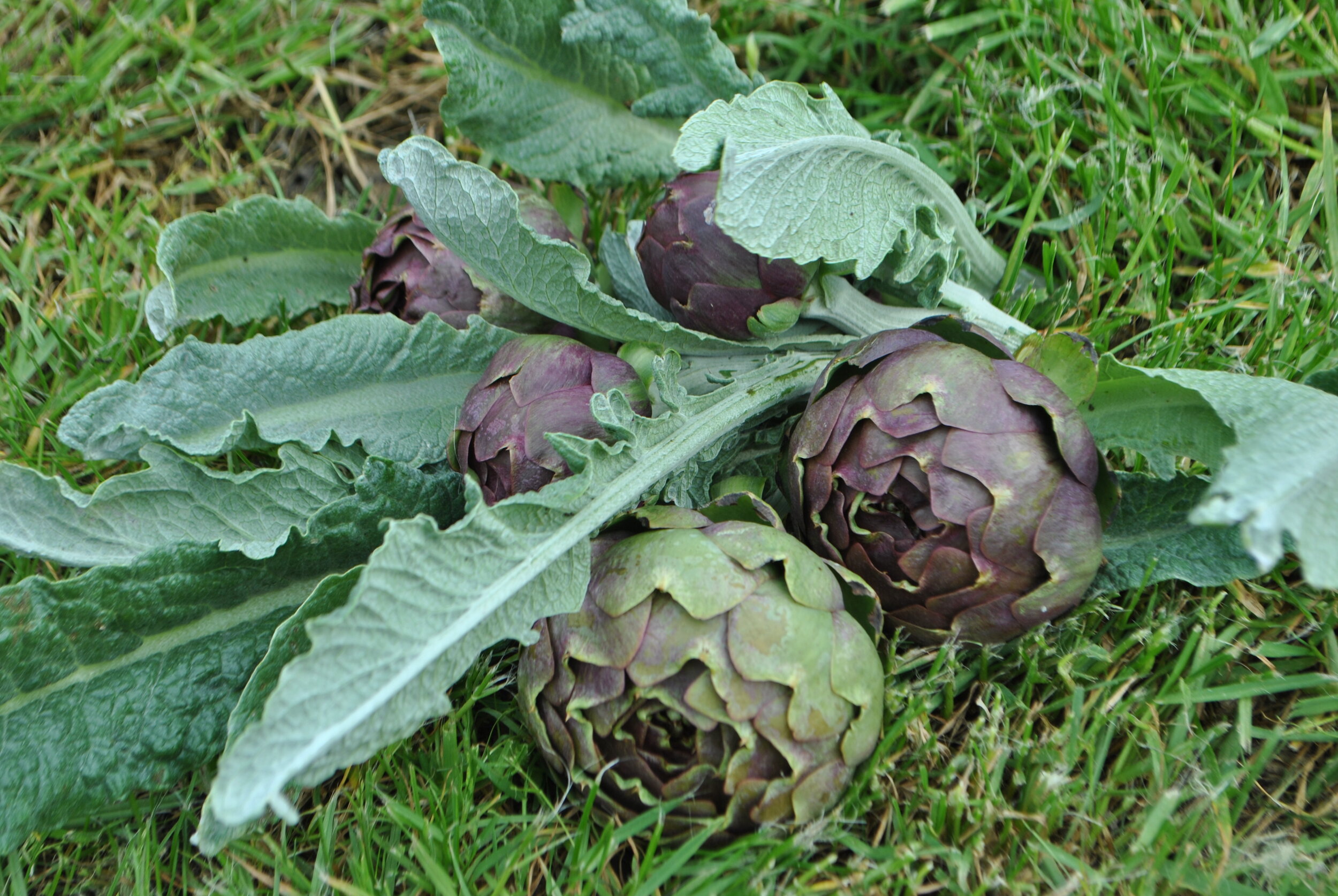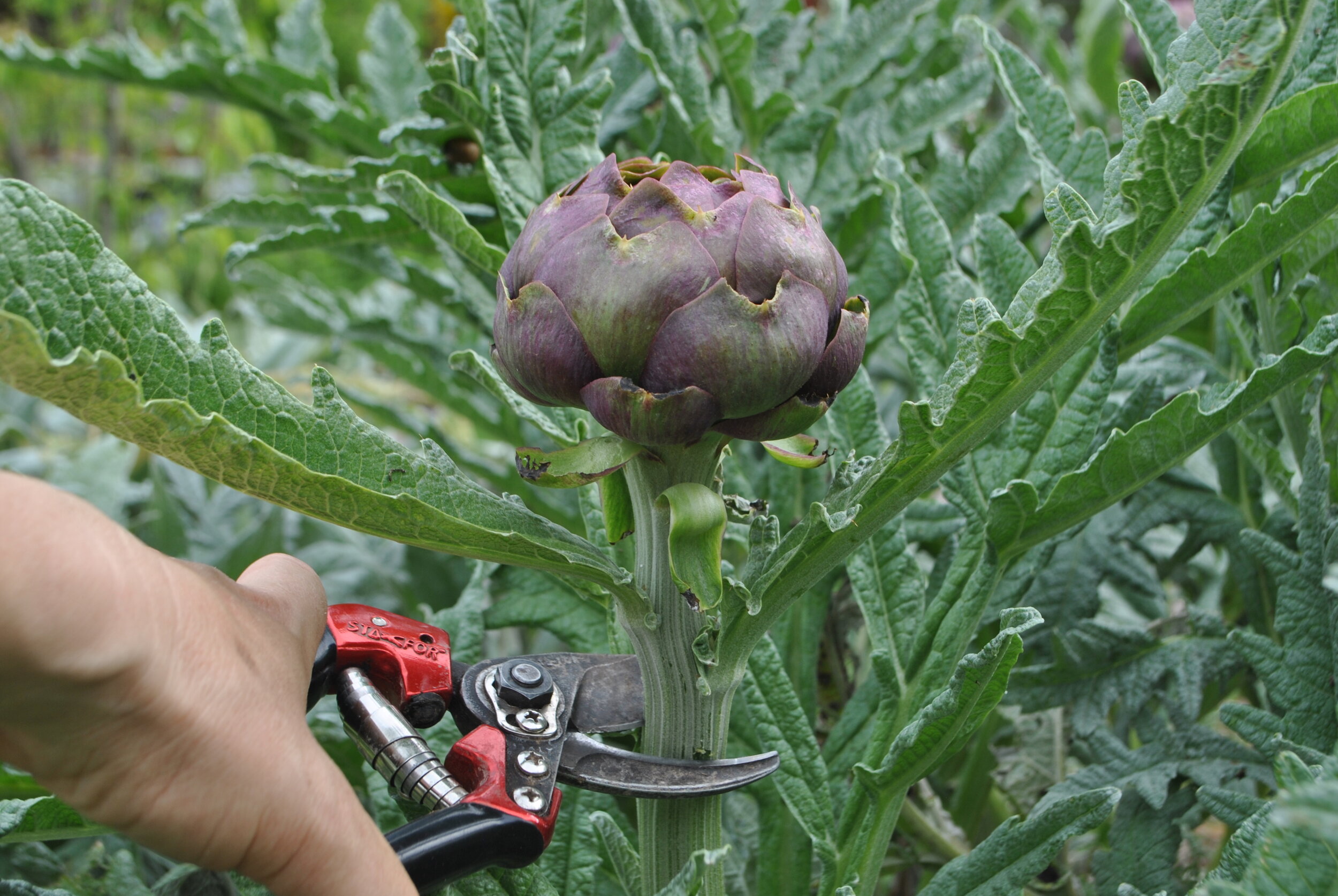Artichokes: delicious and dramatic
Annie Reeve, Woodend Permaculture Garden
As we head towards the ¨hungry gap¨, before the new season vegetables become ready, we have our perennial vegetables filling our tummies with their short season flavours.
Artichokes are a dramatic garden plant as well as a delicious addition to our diet. The plants are quite easily grown from seeds or slips, though it is recommended that plants be renewed every 4-7 years. This is done by lifting in Autumn-Winter, dividing off the young plants around the original plant, or sowing fresh seed. Artichokes thrive on amended soil that drains well, they have a large thick root that will rot if it is a boggy space.
Artichokes are in the aster family and as such their ´flowers´ are rather clusters of small flowers that open over a long period of time making them a long term resource for nectar and pollen eating creatures. They can also be a weed so remove old flowers thoroughly. Artichokes are Summer herbaceous perennials, this means they ¨disappear¨ after flowering and start to regrow in Autumn.
The edible part of artichokes is the flower bud. We cut the flower buds with a stem of 1-2 leaves and when they are still quite firm; not started to open at all. This means trimming does not require choke removal. Trimming reduces the artichoke volume by about half, peel back the tough scales until the colour of the bud quite clearly is blanched and tender at the base. Cut the top third of the rest of the scales across the whole bud and peel the outer skin from the stem, trim to 2-3cm, they are then ready to be added to your cooking. Garlic and artichokes with many savoury herbs are a delight.
Other plants to harvest in October
Overwintered crops include: carrot, parsnip, beetroot, root parsley, broccoli, kale, Leeks, chard, lettuce, spinach, mache, escarole, endive or chicory. (Perennial crops) asparagus, lemons and other citrus, mint, lovage, salad burnet and parsley.



